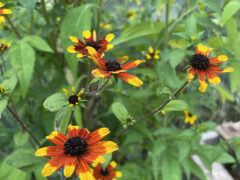
‘Prairie Glow’ Brown-eyed Susan
Rudbeckia triloba 'Prairie Glow'
A butterfly magnet, this compact, well-branched, and floriferous Rudbeckia produces gold-tipped blooms with bronzy orange … Continued
Keystone plants are native plants critical to the food web and necessary for many wildlife species to complete their life cycle. Without keystone plants in the landscape, butterflies, native bees, and birds will not thrive. 96% of our terrestrial birds rely on insects supported by keystone plants.
There are two types of keystone plants: Host plants that feed the young caterpillars of approximately 90% of butterflies and moths (Lepidoptera).
Plants that feed specialist bees who only eat pollen from specific plants. Keystone plants for native bees feed both specialist and generalist bees.

Rudbeckia triloba 'Prairie Glow'
A butterfly magnet, this compact, well-branched, and floriferous Rudbeckia produces gold-tipped blooms with bronzy orange … Continued
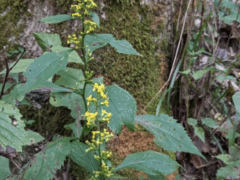
Solidago flexicaulis
Spikes of golden flowers open on black stems that zigzag. Like all goldenrods zigzag supports … Continued
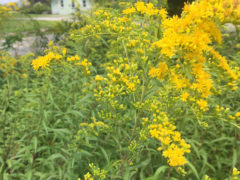
Solidago speciosa
Showy goldenrod is a rhizomatous native perennial which typically occurs in dry soils in open … Continued
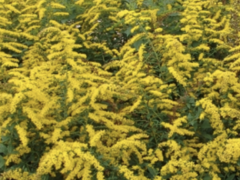
Solidago sphacelata
Sprays of golden yellow flowers open from mid-August through September over semievergreen heart-shaped leaves. This … Continued
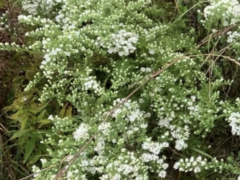
Symphyotrichum ericoides
Wiry, branching stems are covered in small glossy green, needle-like leaves and a snowstorm of … Continued
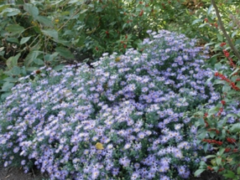
Symphyotrichum laevis 'Bluebird'
A Mt. Cuba selection of the native smooth aster introduced by Dr. Richard Lighty, this … Continued
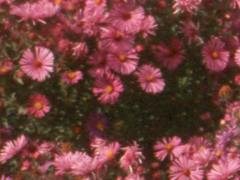
Symphyotrichum novae-angliae
New England aster brings ahowy display of violet-pink flowers late August til frost. A staple … Continued